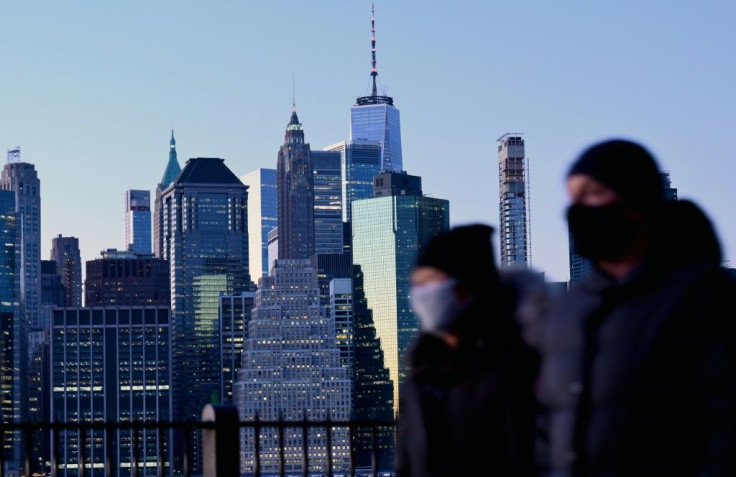Let’s Savor a Little Clean Air, Courtesy of Covid-19


Because of the stalled economy, especially reductions in air and auto traffic, US greenhouse gas emissions are expected to drop 9.2% in 2020, their lowest level in three decades, according to a study by BloombergNEF. Earlier studies have shown reductions in particulate matter, both here and abroad.
That remarkable 9.2% drop is partially offset by the runaway forest fires out West this year, which pumped carbon dioxide into the air. The result is gas emissions will be only 6.4% lower this year, according to the Washington Post.
The study by BloombergNEF, which does research on clean energy, also said even if the pandemic had not occurred, the country still would have experienced a small drop of 1% from 2019 .
As a result of the net decline, reports the Post , the US may yet meet the goals it set at the Paris climate agreement in December 2015. President-elect Joe Biden has said he will reinstate the accord; the US officially withdrew from the accord in early November.
“The amount of pain we’ve had to go through for a relatively modest drop shows that there needs to be more smart policy and smart thinking about emissions,” said Ethan Zindler, BloombergNEF’s head of Americas, in the Post. “The emphasis has to be not on how to reduce demand, but how to make supply more green.”
Climate change and Covid-19
Human-generated greenhouse gas emissions are largely to blame for global climate change, say scientists. A main source is carbon dioxide generated by burning coal, natural gas and oil for electricity and heating.
The danger is that greenhouse gases trap the heat of the sun from leaving the earth’s atmosphere. They also contribute to respiratory and infectious disease from smog and air pollution, according to Aaron Bernstein, MD, director of the Center for Climate, Health, and the Global Environment at the Harvard T.H. Chan School of Public Health.
“Climate change has already made conditions more favorable to the spread of some infectious diseases, including Lyme disease [and] waterborne diseases … To help limit the risk of infectious diseases, we should do all we can to vastly reduce greenhouse gas emissions and limit global warming to 1.5 degrees,” said Dr. Bernstein in a university publication.
“We also need to take climate action to prevent the next pandemic. For example, preventing deforestation—a root cause of climate change—can help stem biodiversity loss as well as slow animal migrations that can increase risk of infectious disease spread. … Reducing air pollution caused by burning fossil fuels like coal, oil and natural gas also helps keep our lungs healthy, which can protect us from respiratory infections like coronavirus,” he said.
Air pollution and Covid-19
With air pollution, there are the long-term effects, and the short-term effects, to contend with. Long term is the effect of greenhouse gases, and the short-term are emissions.
Air pollution and greenhouse gases usually come from the same sources, such as car exhaust and emissions from factories and power plants.
Air pollution is the accumulation of particulate matter (PM2.5) in the air, which increase the risk of respiratory illness, such as asthma and COPD. Because PM2.5 is so small – thinner than a human hair -- it can reach deep into the lungs and sometimes enter the bloodstream.
A recent Harvard University study, published in ScienceAdvances , says that Covid-19 patients who have long-term exposure to air pollution have an 11% greater risk of dying. https://advances.sciencemag.org/content/6/45/eabd4049
Researchers analyzed long-term PM2.5 exposure in counties across the US, along with the Covid-19 death rate in those areas. The number of Covid-19 deaths was 116,747, based on the June 2020 data by the Johns Hopkins University Coronavirus Resource Center. Results showed a higher risk of death in every county studied, linked to PM2.5 exposure.
Another study, published by the European Society of Cardiology in October, evaluated the relationship between air pollution and the Covid-19 death risk on a global scale. https://academic.oup.com/view-large/210529298
https://academic.oup.com/cardiovascres/advance-article/doi/10.1093/cvr/cvaa288/5940460
These researchers found that those who were exposed to ambient fine particulate air pollution for an extended length of time accounted for about 15% of Covid-19 deaths worldwide. The percentages per region were: 19% in Europe, 7% in Africa, 8% in West Asia, 15% in South Asia, 27% in East Asia, 17% in North America, 9% in South America and 3% in Oceania.
Face masks work
Face coverings seem like the best way to tackle Covid-19 and air pollutants.
N95 and N99 respirators are the gold standards in blocking more than 95% of PM2.5 pollutants.
The next choice is likely surgical masks. These may block PM2.5 and other fine particles suspended in the air, but their efficiency depends on the quality of the mask material and the number of layers. The more layers, the more particles the mask can filter.
Finally, there are the cloth masks that you are available everywhere. Cloth masks are the least efficient, but health experts will tell you to wear them, even when outside, because they still serve as a physical barrier between you and particles in the air.
According to one article, the mask’s fit is extremely important. A tiny gap in the fit may increase exposure to particulate matter and other harmful particles in the air. Another factor is your breathing rate; the faster you breathe, the more particles are sucked into the mask filter. A person sitting on a couch may breathe easily through a surgical mask. But someone walking outside for several minutes has a higher breathing rate, while someone jogging with a mask on may have a rapid breathing pattern.
This article is republished from The Conversation under a Creative Commons license. Read the original article.
Published by Medicaldaily.com



























